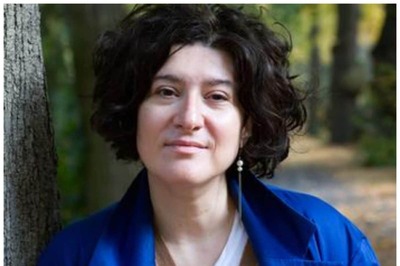
views
London: Never in recorded history has Paris been hotter than it was Thursday, when the temperature neared 110 degree Fahrenheit (43 degree Celsius). The same was true of Belgium, Germany and the Netherlands, as a dangerous heat wave scorched Western Europe.
Parisians could be seen plunging fully clothed into the fountains of the Trocadéro, Viennese cooled themselves in municipal misters, and Amsterdamers dangled their feet in a repurposed kiddie pool at a cafe. But here is what is far less likely to be seen: air conditioners.
That’s because the technology that transformed American homes and offices over the last century still gets a chilly reception in much of Europe.
“Air conditioners are expensive and consume a lot of energy,” Sadio Konte, 26, who was cooling himself in the waters of the Trocadéro, by the Eiffel Tower, said Thursday. “Making the most of fresh and natural places is a smarter solution. And it’s free.”
In that spirit, German music lovers, among them Chancellor Angela Merkel, attended the Wagner festival at an un-air-conditioned opera hall in the southern city of Bayreuth on Thursday afternoon. Temperatures there topped 93 degrees (about 34 Celsius), but propriety won over practicality, and formal wear was the order of the day.
Still, when tradition-proud cultures meet relentlessly heating planets, it is not usually the planets that bend, and there are signs that sweltering Europeans are rethinking their views on air conditioning.
“We have seen regular year-on-year growth,” said Maximilian Schichtl, head of a company in Munich that installs and maintains cooling units.
That, scientists say, may only worsen the global-warming problem down the road.
“By cooling off the inside and warming the outside, we are feeding a disastrous vicious circle,” said Brice Tréméac, head of the Laboratory of Cold, Energy and Thermic Systems, a Paris-based public research institute.
On Thursday, however, Europe’s concerns were more immediate.
Owen Landeg, chief environmental public health scientist at Public Health England, warned that the extremely high temperatures were endangering older people, those in poor health and very young children.
“The extreme heat means that our bodies, especially our hearts and lungs, have to work harder to maintain a normal temperature,” he said in a statement.
In France, authorities issued hundreds of warnings, hoping to avoid a repeat of the devastating death toll the country suffered in a 2003 heat wave. That was believed to have contributed to almost 15,000 deaths.
“Everyone is at risk with these kinds of temperatures,” the health minister, Agnès Buzyn, told reporters.
Volunteers could be seen Thursday on the streets of Paris, where the temperature was a record 108.7 degrees Fahrenheit, handing out water, and City Hall introduced restrictions on cars because of air pollution.
In Germany, all but the northeastern coastal region was under a heat warning, with officials urging people to drink enough fluids and avoid going outdoors in the afternoon hours.
In Austria, the national railway service began painting stretches of track in white, in the hopes of preventing them from getting so hot that they would bend. Similar projects were taking place in parts of Germany and Switzerland.
The British national weather service placed five of England’s nine regions, including London, on a rare Level 3 health watch, one short of a national emergency.
“This is only the second time temperatures over 100 Fahrenheit have been recorded in the UK,” the weather service said.
The hottest summers in Europe in the past 500 years have all come in the past 17 years, scientists say. Several heat waves have been linked to human-caused climate change — and in the years ahead, they say, many more are likely to scorch temperate zones like northern Europe.
In Belgium, where the temperature reached 105, people and infrastructure alike struggled to keep up.
“It’s really shocking to have this heat in Brussels,” said Francesca Van Daele, a student of political science at the Free University of Brussels-VUB. “Our urban planning is not really made for heat waves like this.”
A Eurostar train en route from Brussels to London broke down Wednesday morning in Tubize, Belgium. Despite the heat, passengers were not allowed to open windows or leave the train for three hours because of safety concerns.
“Everything was suddenly down: no air conditioning, no electricity,” said Paul De Grauwe, a Belgian economist who was on the train. “I have never been so hot in my life.”
Commuters on a crowded subway train had it a bit better in London, where the weather led to some odd sights. After a sweating man in a half-unbuttoned, pink-striped shirt opened a window on the train, sweltering passengers made rare eye contact, trading looks of approval and relief.
Forecasters predicted a break in the temperatures as soon as Friday.
But health officials and planners were already talking about the next heat wave and how to soften the effect of rising temperatures without resorting to air conditioning.
Europe accounts for just 6% of the global share of air conditioners, compared with 23% for the United States and 35% for China, according to a 2018 report by the International Energy Agency. More than 90% of Japanese and American households have an air conditioning system; fewer than 10% of Europeans have one. In Germany, the figure is below 2%.
The architecture in many European countries once helped keep cities and towns cool. Narrow streets coupled with high buildings shaded them, while thick-walled buildings and open windows allowed the inside of buildings to keep cool, said Cécile de Munck, a researcher at Météo France, the national weather service.
But the traditional approaches are no longer up to the job.
Experts have suggested that some simple steps may help, like placing shutters inside buildings, not outside, where they bake in the sun. Trees, loose soils and permeable material on roads also help, they say.
There are also higher-tech approaches.
In cities, underground chilled water pipes offer one alternative to air conditioning. In Paris, for example, a 49-mile underground network helps cool a big patch of the city, including the Louvre Museum. The system pumps cold water from the Seine.
By noon in Paris on Thursday, people were looking for relief wherever they could find it — but only to a point.
Luce Tainturier, a 25-year-old urban planning consultant who abandoned her sweltering office building to work from home, said that hard as it may be to bear, the heat wave offered a lesson.
“It’s better not to have air conditioning,” she said, “so we can feel the real effects of climate change.”
Iliana Magra, Elian Peltier and Constant Méheut c.2019 New York Times News Service



















Comments
0 comment